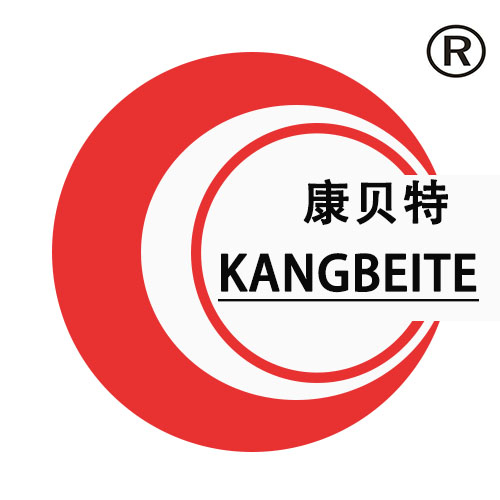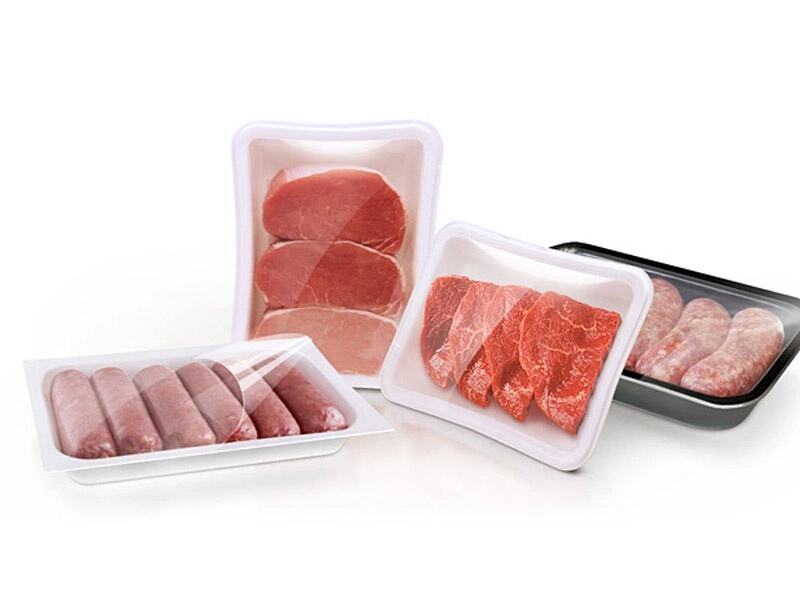Κατανόηση της τεχνολογίας Μεταβαλλόμενης Ατμόσφαιρας Πακέτων
Τι είναι η Μεταβαλλόμενη Ατμόσφαιρα Πακέτων;
Το Πακετοποίησης Με Τροποποιημένη Ατμόσφαιρα (MAP) είναι μια μοναδική τεχνική για τη διατήρηση τροφίμων, που αναπτύχθηκε για να αλλάξει τη περιβάλλοντα ατμόσφαιρα για τα τρόφιμα. Το στόχο του MAP είναι να επεκτείνει τη ζωή στην θάλαμα των τροφίμων, καταναλώνοντας έτσι το φυσικό αέρα σε ένα πακέτο και αντικαθιστώντας τον με ένα προορισμένο μίγμα αερίων: αζώτου, διοξειδίου του άνθρακα και οξυγόνου. Εξαιτίας της πολυτέλειάς τους, αυτή η τεχνολογία χρησιμοποιείται σε μια σειρά εφαρμογών τροφίμων, με τα φούρνια, τα απαλά προϊόντα και τα κρεάτινα να είναι τα κυριότερα τμήματα μεταξύ άλλων. Έναντι της διακενώσεως όπου αφαιρείται ολοσχερώς ο αέρας ή της εισαγωγής μονοειδούς αερίου όπου προστίθεται ένα μόνο αέριο, το MAP επιβλέπει την διαδικασία των αερίων ώστε να προσαρμόζεται συγκεκριμένα στα τρόφιμα.
Επιστημονικά Κύρια Πίσω από την Ελεγχόμενη Σύνθεση Αερίων
Η σύνθεση του αερίου μέσα σε ένα MAP είναι σημαντική για την καταπίεση της μικροβιακής και υγιεινής κατάστασης των τροφίμων. Το MAP επιτυγχάνει με επιτυχία την καθυστέρηση της διαφθοράς και επεκτείνει την ζωή στο ράφι σε διάφορους τύπους τροφίμων με τη χρήση συγκεκριμένων μειγμάτων αερίων (χαμηλό O2, αυξημένο CO2). Για παράδειγμα, έχει βρεθεί ότι συγκεκριμένες αναλογίες αερίων μειώνουν κατά δραματικό τρόπο τη μικροβιακή δραστηριότητα των φρούτων, λαχανικών και κρεάτων. Η αποτελεσματικότητα του MAP επηρεάζεται επίσης από τις ρυθμούς ανταλλαγής αερίων και την διαβαθμιστικότητα του υλικού πακετών, σχεδιασμένου να μειώνει την απόδοση οξυγόνου και να ελέγχει τη χούμιδη, υπό συνθήκες που είναι ευνοϊκές για την διαφύλαξη του προϊόντος με τον καλύτερο τρόπο.
Βασικά οφέλη του πακετοβολισμού με τροποποιημένο αέρα για την αποψυχή
Επεκτεινόμενη ζωή στο ράφι μέσω μικροβιακής κατάργησης
Το Πακέτο Μεταβαλλόμενης Ατμόσφαιρας (MAP) είναι ένας κύριος παράγοντας που συνεισφέρει στην επεκτασία της ζωής στο ράφι με την καθυστέρηση της μικροβιακής αύξησης. Αυτή η μέθοδος χρησιμοποιεί ελεγχόμενες ατμοσφαιρικές συνθήκες για να εμποδίσει τους μικροοργανισμούς που προκαλούν διαφθορά και τους παθογόνους, με αποτέλεσμα να επεκταθεί η ζωή στο ράφι των τροφίμων. Σύμφωνα με πηγές, το MAP μπορεί να παρατείνει την απόκριση των εύφθαρτων τροφίμων κατά 50% περισσότερο από ότι όταν χρησιμοποιούνται σκληρές μέθοδοι πακετών. Το MAP εμποδίζει τη μικροβιακή δραστηριότητα, προλεγώς τη διαφθορά και βοηθά να διατηρηθεί η ασφάλεια και η ποιότητα του προϊόντος κατά τη διανομή και την αποθήκευση. Αυτή η καινοτομία είναι αρκετά αξιόλογη στη λογιστική των αγροτικών προϊόντων και άλλων προϊόντων υψηλής ζήτησης, και επομένως κάνει το MAP ένα κρίσιμο εργαλείο για την επέκταση της ζωής στο ράφι και της ποιότητας στη βιομηχανία τροφίμων.
Διαφύλαξη της Διατροφικής Ποιότητας στα Φρέσκα Γεωπροϊόντα
Ένα άλλο σημαντικό προβάδισμα του MAP είναι η διαφύλαξη της τροφικής αξίας των φρέσκων γεωργικών προϊόντων. Οι ελεγχόμενες ατμοσφαιρικές άνευ αέρα περιβάλλοντα διατηρούν τα κρίσιμα βιταμίνες και μετάλλειες στα τρόφιμά σας από την υποψία. Για παράδειγμα, η ποσότητα βιταμίνης C και αντιοξειδωτικών σε φρούτα όπως μήλα και φράουλα είναι υψηλότερη σε φρούτα που αποθηκεύονται με MAP. Αρκετές μελέτες επισήμαναν ότι το MAP είναι μια πολύ επιτυχημένη μέθοδος για να διατηρηθεί η τροφική ποιότητα, η αποδοχή των καταναλωτών και η προσαρμογή στο διατροφικό καθεστώς. Με τη διαφύλαξη του επιπέδου τροφών στα φρέσκα γεωργικά προϊόντα, το MAP μπορεί να εγγυηθεί στους καταναλωτές ένα προϊόν που δεν είναι μόνο φρεσκότερο, αλλά και πιο θραμμένο.
Μείωση της οξειδωτικότητας και των αποβλήτων τροφίμων
Η χάρτης συνειδαγωγεί σημαντικά τη διαδικασία οξειδωμένων, που είναι μια βασική αιτία καταστροφής και αποβλήτων τροφίμων. Το οξυγόνο αφαιρείται από το πακέτο, έτσι η οξείδωση και η διαφθορά της ποιότητας των τροφίμων συνειδαγωγείται σημαντικά με MAP. Η εισαγωγή MAP έχει αποτελέσει σε σημαντική μείωση των αποβλήτων τροφίμων, με κάποιες βιομηχανίες να αναφέρουν μείωση 30% στην καταστροφή. Αυτή η μείωση απώλειας μπορεί να θεωρηθεί ως οικονομική κερδοφορία, πρώτα για τους εμπόρους με μείωση των απώλειών τους, αλλά και για τους καταναλωτές όσον αφορά το κόστος των κατεστραμμένων εμπορευμάτων. Επιπλέον, η μειωμένη απόβλητα τροφίμων είναι επίσης μια καλή πλευρά από την άποψη της περιβαλλοντικής βιωσιμότητας και είναι μέρος του μεγαλύτερου στόχου να μειωθούν οι άνθρακες αέριο που παράγονται όταν τα τρόφιμα φτιάχνονται και μεταφέρονται.
Αυτοματοποιημένα συστήματα στην εφαρμογή MAP
Ρόλος των μηχανών πληρώματος με βάση το χώρο στην κατάτμηση αερίων
Οι μηχανές γεμισμού όγκου είναι επίσης απαραίτητες για ακριβείς κράτησεις αερίων στο MAP. Με την αυτόματη εκτέλεση μίξεων αερίων, αυτές οι μηχανές βοηθούν να παρέχουν συνεπές και επαναλάφθητες διαδικασίες MAP, που είναι τόσο σημαντικές για την εγγύηση της ακεραιότητας του προϊόντος και την διατήρηση υψηλών προτύπων ποιότητας. Οι μηχανές γεμισμού όγκου όπως η VFM-1200 της UNIFOOD Machinery είναι κατασταλμένες για την ακρίβειά τους και την ταχύτητά τους στην εισαγωγή ενός ευρύτερου φάσματος αερίων που χρησιμοποιούνται στο MAP, απελευθερώνοντας τις γραμμές συσκευασίας από τις περιορισμούς της αποτελειακότητας.
Υψηλής Διαθεσιμότητας Καθαριστές Καρπών για Προετοιμασία Πριν την Πακετοποίηση
Ψύξης Καθαρισμός Υγιεινή με MAP Για υψηλής επιδόσεως μηχανέματα καθαρισμού φρούτων είναι απαραίτητα για την υγιεινή στο στάδιο προ-ενσωμάτωσης της λειτουργίας MAP. Αυτά τα συστήματα πλύνουν και σανιτάριζουν τα φρούτα και παρέχουν εγγύηση ότι τα φρούτα που συσκευάζονται έχουν πλυθεί και σανιτάρισθει. Τέτοιοι καθαριστές είναι κρίσιμοι για να ανταποκριθούν στις βιομηχανικές προδιαγραφές που έχουν οριστεί από τη Διεθνή Ένωση Πρώτων Στοιχείων Φρέσκων Προϊόντων, που παρέχουν την κατάλληλη ατμόσφαιρα για MAP. Για παράδειγμα, μηχανές που έχουν δυνατότητα πολλαπλών βημάτων καθαρισμού είναι πλειονεκτικές για την αφαίρεση διαφορετικών ακαθαρσιών από το απόθεμα, αποτελώντας ένα πιο καθαρό προϊόν για την πακέτοποιηση.
Ενσωμάτωση με συστήματα γεμισμού υγρών
Η συνδυασμένη χρήση των συστημάτων MAP και γεμισματός με υγρό επιτρέπει την ανάπτυξη ολοκληρωμένων λύσεων πακετοβολίας που θα βελτιώσουν την ποιότητα του προϊόντος και την ασφάλεια των καταναλωτών. Για παράδειγμα, το γεμισματικό υγρού και αερίου μπορεί να γίνεται παράλληλα σε προϊόντα όπως αυτά που περιέχουν μισο-ητοιμα^ ή προ-μαρινάδα. Αυτός ο συνδυασμός είναι απαραίτητος για τη διαφύλαξη των εύφθαρτων προϊόντων κρατώντας τα από την διαφθορά και εξασφαλίζοντας ότι θα παραμείνουν αποδεκτά και απολαυστικά. Όταν το γεμισματικό υγρού και των εισαγωγικών αερίων επιβλέπεται και ελέγχεται με ακρίβεια, οι εταιρείες μπορούν να δημιουργήσουν πιο ελκυστικά πακέτα για τους καταναλωτές και να επισημάνουν αυτά τα προϊόντα με σταθερότητα ως свεσh και υψηλής ποιότητας, ελαχιστοποιώντας την απορρίμνα και την απογοήτευση των πελατών.
Εφαρμογές MAP στις Τομείς Τροφίμων
Τομέας Φορνοβολικών: Διατήρηση της Ξανθιάς του Ψωμιού
Στον τομέα της φούρνας: Η Τεχνική Πακετοποίησης Μεταβαλλόμενης Ατμόσφαιρας (MAP) είναι μια κλειδιά τεχνολογία για τη διαφύλαξη της απαιτούμενης πρόσφατης συντήρησης των προϊόντων φούρνας και την αποφυγή του γεύματος ξηροπσώματος. Η τεχνολογία αλλάζει την ατμόσφαιρα γύρω από το προϊόν, συχνά μειώνοντας τα επίπεδα οξυγόνου για να εμποδίσει τη διαδικασία ξηροψωμάτωσης και να διατηρήσει τη ζωντανή ζωή των προϊόντων όπως το ψωμί και τα γλυκά. Η εφαρμογή έχει αποδειχθεί επιτυχέςς μεταξύ πολλών από τους κορυφαίους παραγωγούς προϊόντων φούρνας, με αναφερόμενη μειώση στις ρύπανσεις και τις αποβλήτες. Πιο σημαντικό, οι καταναλωτές ζητούν προϊόντα φούρνας που πακετοποιούνται με MAP λόγω της δυνατότητας τους να διατηρούν την πρόσφατη ποιότητά τους για μεγαλύτερο διάστημα. Σύμφωνα με μια έρευνα που δημοσιεύθηκε από την Ενωση Φούρνες της Αμερικής, το 60% των καταναλωτών ψωμιού είναι έτοιμοι να πληρώσουν περισσότερα για λύσεις MAP που διατηρούν την πρόσφατη ποιότητα για μεγαλύτερο διάστημα στα προϊόντα ψωμιού.
Φρέσκα Προϊόντα: Από την καθαρισμό μέχρι την κλειδαρμένη-ατμόσφαιρα κλειστή σφράγιση
Στον τομέα των αιχμαλωτικών προϊόντων, η χρήση του Υποδείγματος Αλλαγής Ατμόσφαιρας (MAP) θεωρείται ως μια ολοκληρωμένη εφαρμογή, ξεκινώντας από την προ-πλύσιμο και λήγοντας με την συσκευασία. Η διαδικασία ξεκινά με την καθαρισμούσα μηχανή για φρέσκα προϊόντα, η οποία εγγυάται υψηλά επίπεδα υγιεινής πριν από την συσκευασία. Στη συνέχεια έρχεται η επισφραγίδα με ελεγχόμενη ατμόσφαιρα — τα καραμελοπαρεμβλημένα μήλα καταπυσθούν με αέρια όπως ο διοξείδιος του άνθρακα και το αζώτιο για να διατηρηθούν τα προϊόντα φρέσκα, κρατώντας μακριά την διαδικασία της αναπνοής για να διατηρηθεί η ποιότητα του προϊόντος. Διατηρείται όχι μόνο η τροφική αξία, αλλά και η φυσική εμφάνιση και η γεύση των λαχανικών σε αυτήν τη διαδικασία. Ιστορίες επιτυχίας από τη χρήση MAP για παραγωγούς φρέσκων προϊόντων έχουν αναφερθεί ευρέως σε πραγματικά παραδείγματα. Για παράδειγμα, μια μελέτη που διεξήχθη από την Fresh Fruits and Exotic Inc σε εμπορική κλίμακα δείξει μια εκτεταμένη αύξηση στη διάρκεια ζωής στο ράφανο και στη διατήρηση της ποιότητας μετά τη χρήση MAP, με αποτέλεσμα μεγαλύτερη ικανοποίηση των πελατών και λιγότερο απόβλητο.
Αντιμετώπιση προκλήσεων στην εφαρμογή MAP
Ισορροπία κόστους με τις πλεονεκτήματα της φρεσκής
Η οικονομική ισορροπία μεταξύ επένδυσης και κέρδους της τεχνολογίας Συσκευασίας σε Τροποποιημένη Ατμόσφαιρα (MAP), την οποία χρησιμοποιεί ευρέως η βιομηχανία τροφίμων για να διατηρήσει τα προϊόντα φρέσκα. Ενώ το αρχικό κόστος για την τεχνολογία MAP μπορεί να είναι αρκετά υψηλό, θα πρέπει να λαμβάνονται υπόψη τα μακροπρόθεσμα κέρδη. Επιχειρήσεις που χρησιμοποιούν την τεχνολογία MAP έχουν διαπιστώσει μείωση των αποβλήτων και αισθητή παράταση της διάρκειας ζωής των προϊόντων, γεγονός που εξουδετερώνει το κόστος της επένδυσης. Το γεγονός ότι η αρχική δαπάνη μπορεί να οδηγήσει σε αυξημένες πωλήσεις λόγω βελτιωμένης φρεσκάδας είναι ένα επιπλέον πλεονέκτημα. Τη χρησιμοποιούν επίσης επιχειρήσεις αρτοποιίας όπως το 's The Bakery, γεγονός που αποδεικνύει ότι η αρχική επένδυση είναι αμελητέα σε σχέση με τις οικονομικές εξοικονομήσεις και την ικανοποίηση του καταναλωτή.
Τεχνικές Απαιτήσεις για Ιδανικές Αναλογίες Αερίων
Για να εκτελεστεί ορθά το MAP, είναι απαραίτητο να πληρούνται συγκεκριμένες τεχνικές προδιαγραφές, συμπεριλαμβανομένων και των αναλογιών αερίων. Η σωστή μίξη αερίων όπως οξυγόνο, διοξείδιο του άνθρακα και αζώτου είναι κρίσιμη για την ποιότητα του προϊόντος και τη διάρκεια ζωής του. Επιπλέον, πρέπει να γνωρίζετε τις ειδικές απαιτήσεις διαφόρων τροφιμιακών προϊόντων για να επιτύχετε τις σωστές μίξεις αερίων, καθώς και τη χρήση τεχνολογίας που επιτρέπει ακριβή ρύθμιση των αερίων. Συμβουλεύεται στις επιχειρήσεις να αναζητήσουν ειδικευμένη βοήθεια για να εξασφαλίσουν ότι εφαρμόζουν τις καλύτερες πρακτικές στη διαχείριση των αερίων. Η σωστή καλιβροποίηση και ελεγχός των αναλογιών των αερίων θα αποφύγει την διαφθορά του προϊόντος και θα εγγυηθεί ότι το συσκευασμένο τρόφιμο διατηρεί τις επιθυμητές ποιοτικές παραμέτρους, με αποτέλεσμα να αμειψιάσει η τεχνική επένδυση που απαιτεί το MAP κατά την εγκατάστασή του.

